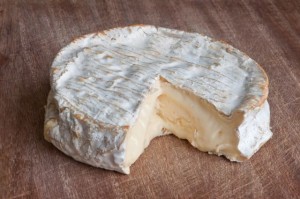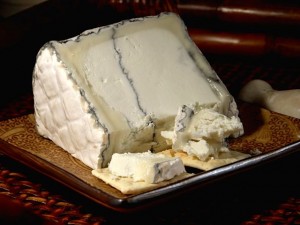French Cheese: The Secrets of Fromage
French cheese is one of that country’s best known and loved exports, and with over 350 AOC cheeses to choose from, it can take some time to get to know them!
But French cheese really isn’t all that mysterious. Here’s our guide to uncovering the secrets of fromage.
Types of Cheese
The first thing to know about French cheese is that there are different types. Each type will have many different cheeses, but once you know which types you like best, it can be easier to narrow down the choice at the fromagerie.
- Hard cheeses include a variety of different cheeses that you’ve probably already heard of, like Comté and Cantal. Cheddar also falls into this category, though it’s far from a French cheese!
- The French actually further divide this category into cuit or cooked and non-cuit or uncooked. The cuit would be true hard cheeses like Comté and Beaufort.
- The non-cuit might be called semi-soft in certain circles and include Cantal, Morbier and tomme-style cheeses. These cheeses are usually sold based on how long they have been aged, often between six months and up to 36 months! The longer a cheese is aged, the harder and more flavorful it will become. It will also develop Parmesan-like crystals of flavor as it ages.
- Fresh cheeses are cheeses that are barely a few weeks old. These cheeses have not been matured like many other cheeses.
- One of the most common is fresh goat’s cheese, but you can also find fresh cow’s and sheep’s milk cheeses in this category.
- A fresh cheese can then be aged or affiné by your cheesemonger, so you will find fresh cheeses that have been dried to a certain texture. The four common textures are frais, mi-frais, mi-sec and sec, in order: fresh, semi-fresh, semi-dry, and dry. The dryer a cheese is, the stronger its flavor will be.
Blue cheeses are also called “parslied” in French. These cheeses are made by injecting a form of controlled mold into the cheese as it ages. The most famous blue cheese is Roquefort, which is made with sheep’s milk, but you’ll also find other versions like Bleu d’Auvergne, which is made with cow’s milk and tends not to be quite as pungent.
- Washed-rind cheeses are the stinkiest of the bunch. Washed rind cheeses include Epoisses and Maroilles. The name of these cheeses is in reference to the fact that the rind is washed with a solution, something as simple as saltwater or as exciting as grappa, which causes bacteria to form and make it quite flavorful. While these cheeses are often very smelly, their bark is usually worse than their bite, and a pungent rind often hides a silky smooth, mild cheese within.
- Bloomy-rind cheeses are some of the most famous in France, including perennial favorites Brie and Camembert. The reference in this case is to the bloomy white mold that is allowed to grow to form the crust. This mold is part of the cheese, and it’s seen as very rude to cut it off!
Making Your Own Cheese Platter
Now that you know the different types of French cheese, it should be easy to make your own platter! You can go about it in a number of ways.
- First, decide how many cheeses you want; between three and five is usually enough, as otherwise things can get overwhelming. Plan on about 3-4 ounces per person.
- Next, decide the “theme” of your cheese platter. This can be as simple as choosing one cheese from three to five different categories as listed above, or you can make things more interesting.
- If you know your friends are fans of bleu, you could pick four different blue cheeses. If you’re working with cheese débutants, maybe pick a few cheeses that have all been aged fewer than three months. You could also pick cheeses based on region or milk type.
- It’s a good idea to have at least one fresh, one hard and one of the softer cheeses (either bloomy or washed rind), and add a blue as a fourth, but there are no hard-and-fast rules here!
In France, you don’t often see sweeter pairings with cheese, but you can pick a few! A jam or compote can be a welcome treat with a stronger cheese like blue or Epoisses — try a fig jam or a cherry compote. You could also garnish your cheese platter with grape clusters!
And if you want to stay truly French, be sure to serve baguette — no crackers allowed!
How to Cut Cheese

- For a round cheese, it’s actually pretty easy: treat it like a pizza, and cut wedges.
- For a wedge of cheese shaped like a doorstop, like Comté, cut slices parallel to the largest piece of rind until you reach about two inches from the rind. Then begin cutting chunks perpendicular to the rind. Because the rind of these sorts of cheeses is taken off, you don’t want anyone ending up with the end!
- For a wedge of cheese shaped like a pie piece, like Brie, the rule is to protect the integrity of the point: cut wedges on either side of the point, trading off which side you cut from until you reach the end. Then cut slices perpendicular to the base.
Now all you have to do is dig in!
Sign Up for our eNews articles and receive our Free Guide to Wine Tasting Like a Pro!


